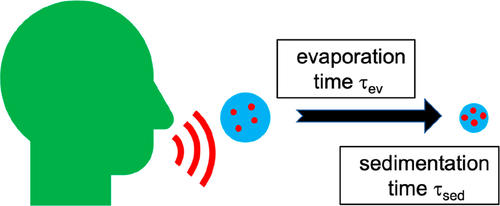Physics of Virus Transmission by Speaking Droplets
Theoretical investigation on physics of virus transmission by speaking droplets indicates that mouth coverings can help contain the COVID-19 pandemic.
News from Sep 25, 2020
People emit tiny droplets of oral fluid when they speak. Depending on droplets’ size and air humidity, speaking droplets fall to the ground or remain airborne. Physics professor Roland Netz from Freie Universität Berlin and American biophysicist Dr. William A. Eaton from National Institutes of Health used simple and transparent algebraic equations that capture the essential physics of virus-containing droplets. The scientists provided theoretical evidence that the use of masks can be helpful against the COVID-19 pandemic.
The study answers two important questions: First, how long does it take for a virus-containing droplet of a given size to fall to the ground by gravity to potentially contaminate a surface? Second, for a given relative humidity, how much time does it take for water evaporation to reduce a virus-containing droplet to a size that leaves it floating in air for a sufficiently long time to allow direct transmission of the virus to another person?
Calculations with the presented equations provide a straightforward way of determining whether emitted droplets remain airborne or rapidly fall to the ground, after accounting for the decrease in droplet size from water evaporation. At a relative humidity of 50%, for example, droplets with initial radii larger than about 50 μm rapidly fall to the ground, while smaller, potentially virus-containing droplets shrink in size from water evaporation and remain airborne for many minutes. Estimates of airborne virion emission rates while speaking strongly support the proposal that mouth coverings can help contain the COVID-19 pandemic.
The study results have been published in the journal PNAS (Proceedings of the National Academy of Sciences of the United States of America). A detailed study by Roland Netz on the subject of speech droplets was published in the Journal of Physical Chemistry.


